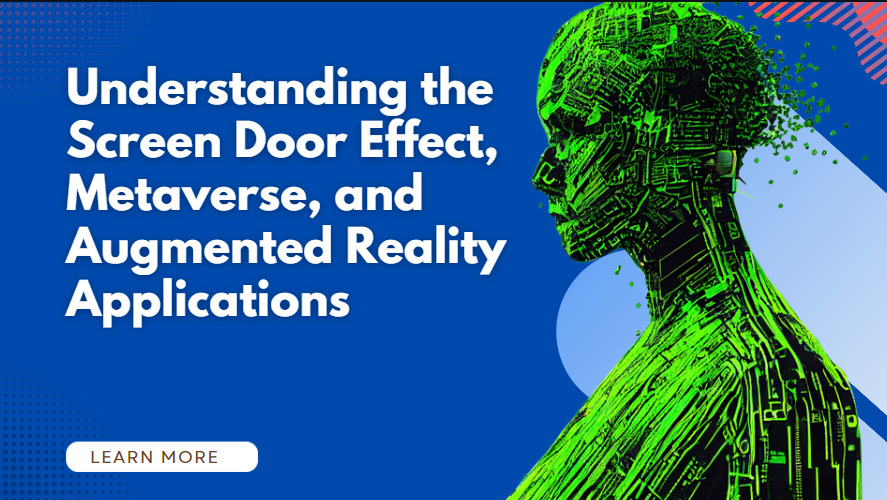Since the inception of virtual reality (VR) and augmented reality (AR) technologies in the late 20th century, they have transformed from niche, experimental technologies into mainstream, commercially viable products. The journey has been difficult, with many roadblocks, most notably technological limitations and user scepticism. However, with advancements in processing power, graphics, and display technologies, these immersive experiences are becoming more compelling.
- Understanding the Screen Door Effect: The screen door effect is a visual artefact in VR, where users feel like they are looking through a mesh screen. This can detract from the immersive experience. Increasing pixel density and screen resolution can help mitigate the effect but require more computing power to overcome this. Newer VR headsets are incorporating technologies such as foveated rendering and different types of displays to minimize this effect. Let’s take a closer look at how this works.
- The Metaverse: A Universal Virtual World: The concept of a fully immersive, persistent, and universally accessible virtual world, known as the metaverse, is turning from science fiction into reality. It’s not just a single world but a universe of interconnected experiences and opportunities. To understand the potential impact of the metaverse, let’s explore its applications across various domains, including entertainment, business, education, and social interaction.
- Augmented Reality: Examining Pokemon Go as an Example: AR overlays digital content in the real world, creating a blend of physical and virtual experiences. Pokemon Go, a game launched in 2016, is an excellent example of AR’s potential. Using geolocation, the game places virtual creatures, or Pokemon, in real-world locations, encouraging players to explore their surroundings. This successful game demonstrated how AR can create engaging and interactive experiences, making the technology accessible and familiar to a wide audience.
- Benefits of Virtual Reality in Business Training: VR technology provides businesses an efficient and cost-effective way to train employees. By creating realistic simulations of work environments, companies can allow employees to practice their skills in a safe and controlled setting. Whether it’s teaching new surgical techniques to doctors, providing safety training to construction workers, or helping retail employees master customer service skills, VR can improve the effectiveness of training programs while reducing costs.
- Building AR/VR Applications using Open Source Frameworks: Open-source frameworks have significantly advanced AR/VR development. Unity has been a favourite among developers with its easy-to-use interface and extensive platform support. Unreal Engine, renowned for its realistic graphics and physics, is another solid choice for creating high-quality VR experiences. For AR development, Vuforia and ARCore offer robust feature sets for object tracking and real-world integration. Choosing the right framework depends on your project’s requirements and your development team’s expertise.
Conclusion:
As VR and AR technologies evolve, they offer immense potential for transforming various aspects of our lives. By addressing visual artefacts like the screen door effect, exploring the possibilities of the metaverse, and leveraging AR applications like Pokemon Go, we can unlock new realms of immersive experiences. Whether in business training or developing cutting-edge applications, these technologies provide exciting opportunities for innovation and growth.
Remember to check back regularly as we update this blog with the latest insights and information on VR, AR, and their ever-expanding possibilities.

